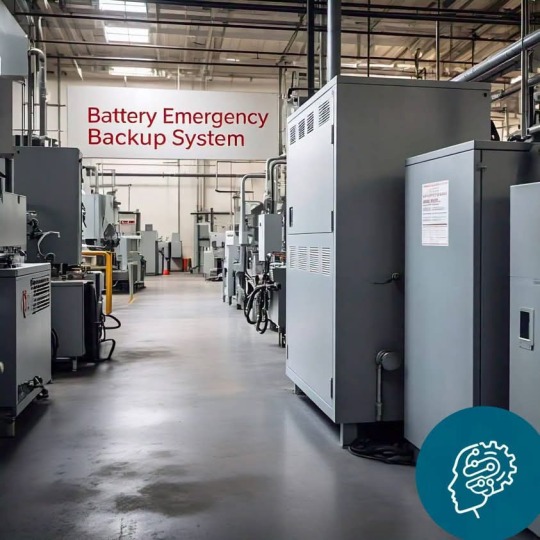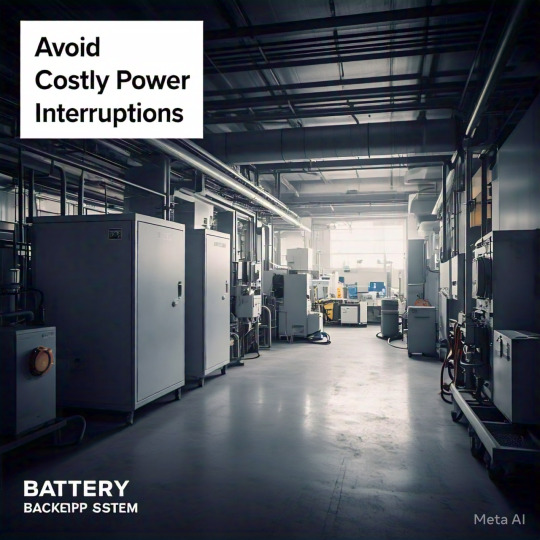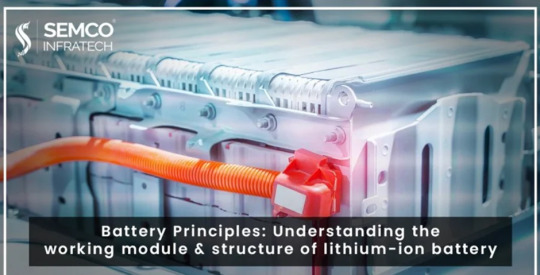#Battery System Design
Explore tagged Tumblr posts
Text
appleiphone
#Apple’s latest iPhone release has once again created a buzz in the tech world. Known for its innovation and premium quality#Apple has introduced several new features and enhancements in this iPhone series. From design upgrades to advanced performance capabilities#the new iPhhttps://pricewhiz.pk/one is making headlines. Let's dive into what makes this new iPhone stand out.#Design and Display:#The design of the new iPhone continues Apple’s legacy of combining elegance with durability. The latest model features a sleek glass and me#giving it a premium look and feel. The Super Retina XDR OLED display offers stunning visuals with improved brightness and contrast#ensuring a vibrant and immersive experience. Available in different sizes#the new iPhone caters to various user preferences#whether you prefer a compact phone or a larger display.#Processor and Performance:#At the heart of the new iPhone is the A16 Bionic chipset#Apple’s most powerful chip to date. This 6-core CPU and 5-core GPU deliver lightning-fast performance#making multitasking#gaming#and content creation smoother than ever. With its advanced machine learning capabilities#the iPhone adapts to your usage patterns#optimizing performance and enhancing overall efficiency.#Camera System:#Apple has always excelled in mobile photography#and the new iPhone takes it a step further. The upgraded 48-megapixel primary camera captures stunningly detailed photos#even in challenging lighting conditions. Low-light photography has seen significant improvements#allowing users to take clearer#sharper images at night. The iPhone also offers advanced video capabilities#including Cinematic Mode and Pro-level editing tools#making it ideal for both amateur and professional content creators.#Battery Life and Charging:#Battery life has always been a crucial factor for iPhone users#and Apple has made improvements in this area as well. The new iPhone promises all-day battery life#ensuring that you stay connected and productive without constantly worrying about recharging. Fast charging and wireless charging options m#Software and Security:
2 notes
·
View notes
Text
6 Reasons To Opt For A Comprehensive Lightning Protection Design System
Since 1971, LEC has developed specialized expertise in lightning protection design. While traditional lightning strike protection methods may be adequate for some installations, custom lightning protection design systems meet more exacting requirements when more complete protection is needed. Engineering an appropriate solution is more complex than simply putting up a lightning rod. Before implementing a protection plan, each site is evaluated for risk factors, geography, soil type, and many other parameters.
A comprehensive lightning protection design is a necessity for all facilities, and here are six reasons:
Climate change has increased the number of lightning strikes each year, putting every part of the country at risk.
The devices that operate your facility and keep you, your investment, and your personnel safe — including security systems, heating and cooling equipment, and electronic appliances — can be knocked out by lightning surges, even if the lightning does not directly strike your facility.
Grounding and surge protection products without lightning protection do not protect against lightning.
At LEC, lightning protection systems are custom designed and installed by our professional and experienced engineers, keeping the building's aesthetics in mind.
Lightning protection is affordable, may reduce insurance premiums, and can enhance the value of your facility by providing peace of mind.
A properly installed lightning protection system safeguards a business structurally and also protects property, inventory, electronic equipment, and personnel from the destructive forces of lightning. Like fire alarms, sprinklers, and security systems, a lightning protection system provides the peace of mind that comes from knowing that a potentially catastrophic problem has been dealt with proactively.
Did you know that a lightning protection system that has been designed and installed according to accepted industry standards can last for two to three generations with little to no maintenance? Furthermore, when a structure is remodeled to meet new requirements, most of the components of a lightning protection design system will remain usable when reconfigured. Or if a structure is torn down, the aluminum and copper components can be easily recycled without deterioration.
We are dedicated to providing lightning protection and prevention products, solutions, and services that meet international standards.
#Lightning Damage#Lightning Protection#Lightning Protection Design#Lightning Protection Products#Lightning Protection Systems#Lightning Rod Protection#Lightning Surge Protection Devices#Fuel Tank Lightning Protection#Grounding Rod#Tank Battery Lightning Protection
2 notes
·
View notes
Link
The article by Clayton Walker, published on June 20, 2025, in "The Armory Life," introduces Vortex Optics' new lineup called the "Defender Tan." These red dot sights are available in three models – Defender-ST, Defender-XL, and Defender-CCW – all featuring an anodized tan finish to complement the color of many firearms like the Desert FDE Springfield Armory Hellcat Pro and Echelon 4.5F. The Defender series stands out with features tailored for intense use, such as rugged Fast-Rack texturing, a shock shield for impact protection, and aspherical lenses for distortion-free viewing. These optics come with practical features such as auto shutoff to extend battery life and are backed by Vortex’s VIP lifetime warranty. Prices for these models range from $249 to $399, targeting various shooting needs from concealed carry to competitive shooting.
#Tan Vortex Defender Red Dot Sight#Vortex Optics#red dot sight#firearms accessories#tactical shooting#precision shooting#target acquisition#gun enthusiasts#shooting performance#reticle options#battery life#co-witness capability#windage and elevation adjustments#waterproof design#shockproof technology#lightweight construction#matte finish#durable build#shooting range use#competition shooting#firearm compatibility#mounting system#sight alignment.
0 notes
Text
Choosing the Eyes of the Autonomous Vehicle: A Battle of Sensors, Strategies, and Trade-Offs
New Post has been published on https://thedigitalinsider.com/choosing-the-eyes-of-the-autonomous-vehicle-a-battle-of-sensors-strategies-and-trade-offs/
Choosing the Eyes of the Autonomous Vehicle: A Battle of Sensors, Strategies, and Trade-Offs


By 2030, the autonomous vehicle market is expected to surpass $2.2 trillion, with millions of cars navigating roads using AI and advanced sensor systems. Yet amid this rapid growth, a fundamental debate remains unresolved: which sensors are best suited for autonomous driving — lidars, cameras, radars, or something entirely new?
This question is far from academic. The choice of sensors affects everything from safety and performance to cost and energy efficiency. Some companies, like Waymo, bet on redundancy and variety, outfitting their vehicles with a full suite of lidars, cameras, and radars. Others, like Tesla, pursue a more minimalist and cost-effective approach, relying heavily on cameras and software innovation.
Let’s explore these diverging strategies, the technical paradoxes they face, and the business logic driving their decisions.
Why Smarter Machines Demand Smarter Energy Solutions
This is indeed an important issue. I faced a similar dilemma when I launched a drone-related startup in 2013. We were trying to create drones capable of tracking human movement. At that time, the idea was ahead, but it soon became clear that there was a technical paradox.
For a drone to track an object, it must analyze sensor data, which requires computational power — an onboard computer. However, the more powerful the computer needs to be, the higher the energy consumption. Consequently, a battery with more capacity is needed. However, a larger battery increases the drone’s weight, and more weight requires even more energy. A vicious cycle arises: increasing power demands lead to higher energy consumption, weight, and ultimately, cost.
The same problem applies to autonomous vehicles. On the one hand, you want to equip the vehicle with all possible sensors to collect as much data as possible, synchronize it, and make the most accurate decisions. On the other hand, this significantly increases the system’s cost and energy consumption. It’s important to consider not only the cost of the sensors themselves but also the energy required to process their data.
The amount of data is increasing, and the computational load is growing. Of course, over time, computing systems have become more compact and energy-efficient, and software has become more optimized. In the 1980s, processing a 10×10 pixel image could take hours; today, systems analyze 4K video in real-time and perform additional computations on the device without consuming excessive energy. However, the performance dilemma still remains, and AV companies are improving not only sensors but also computational hardware and optimization algorithms.
Processing or Perception?
The performance issues where the system must decide which data to drop are primarily due to computational limitations rather than problems with LiDAR, camera, or radar sensors. These sensors function as the vehicle’s eyes and ears, continuously capturing vast amounts of environmental data. However, if the onboard computing “brain” lacks the processing power to handle all this information in real time, it becomes overwhelming. As a result, the system must prioritize certain data streams over others, potentially ignoring some objects or scenes in specific situations to focus on higher-priority tasks.
This computational bottleneck means that even if the sensors are functioning perfectly, and often they have redundancies to ensure reliability, the vehicle may still struggle to process all the data effectively. Blaming the sensors isn’t appropriate in this context because the issue lies in the data processing capacity. Enhancing computational hardware and optimizing algorithms are essential steps to mitigate these challenges. By improving the system’s ability to handle large data volumes, autonomous vehicles can reduce the likelihood of missing critical information, leading to safer and more reliable operations.
Lidar, Сamera, and Radar systems: Pros & Cons
It’s impossible to say that one type of sensor is better than another — each serves its own purpose. Problems are solved by selecting the appropriate sensor for a specific task.
LiDAR, while offering precise 3D mapping, is expensive and struggles in adverse weather conditions like rain and fog, which can scatter its laser signals. It also requires significant computational resources to process its dense data.
Cameras, though cost-effective, are highly dependent on lighting conditions, performing poorly in low light, glare, or rapid lighting changes. They also lack inherent depth perception and struggle with obstructions like dirt, rain, or snow on the lens.
Radar is reliable in detecting objects in various weather conditions, but its low resolution makes it hard to distinguish between small or closely spaced objects. It often generates false positives, detecting irrelevant items that can trigger unnecessary responses. Additionally, radar cannot decipher context or help identify objects visually, unlike with cameras.
By leveraging sensor fusion — combining data from LiDAR, radar, and cameras — these systems gain a more holistic and accurate understanding of their environment, which in turn enhances both safety and real-time decision-making. Keymakr’s collaboration with leading ADAS developers has shown how critical this approach is to system reliability. We’ve consistently worked on diverse, high-quality datasets to support model training and refinement.
Waymo VS Tesla: A Tale of Two Autonomous Visions
In AV, few comparisons spark as much debate as Tesla and Waymo. Both are pioneering the future of mobility — but with radically different philosophies. So, why does a Waymo car look like a sensor-packed spaceship, while Tesla appears almost free of external sensors?
Let’s take a look at the Waymo vehicle. It’s a base Jaguar modified for autonomous driving. On its roof are dozens of sensors: lidars, cameras, spinning laser systems (so-called “spinners”), and radars. There are truly many of them: cameras in the mirrors, sensors on the front and rear bumpers, long-range viewing systems — all of this is synchronized.
If such a vehicle gets into an accident, the engineering team adds new sensors to gather the missing information. Their approach is to use the maximum number of available technologies.
So why doesn’t Tesla follow the same path? One of the main reasons is that Tesla has not yet released its Robotaxi to the market. Also, their approach focuses on cost minimization and innovation. Tesla believes using lidars is impractical due to their high cost: the manufacturing cost of an RGB camera is about $3, whereas a lidar can cost $400 or more. Furthermore, lidars contain mechanical parts — rotating mirrors and motors—which makes them more prone to failure and replacement.
Cameras, by contrast, are static. They have no moving parts, are much more reliable, and can function for decades until the casing degrades or the lens dims. Moreover, cameras are easier to integrate into a car’s design: they can be hidden inside the body, made nearly invisible.
Production approaches also differ significantly. Waymo uses an existing platform — a production Jaguar — onto which sensors are mounted. They don’t have a choice. Tesla, on the other hand, manufactures vehicles from scratch and can plan sensor integration into the body from the outset, concealing them from view. Formally, they will be listed in the specs, but visually, they’ll be almost unnoticeable.
Currently, Tesla uses eight cameras around the car — in the front, rear, side mirrors, and doors. Will they use additional sensors? I believe so.
Based on my experience as a Tesla driver who has also ridden in Waymo vehicles, I believe that incorporating lidar would improve Tesla’s Full Self-Driving system. It feels to me that Tesla’s FSD currently lacks some accuracy when driving. Adding lidar technology could enhance its ability to navigate challenging conditions like significant sun glare, airborne dust, or fog. This improvement would potentially make the system safer and more reliable compared to relying solely on cameras.
But from the business perspective, when a company develops its own technology, it aims for a competitive advantage — a technological edge. If it can create a solution that is dramatically more efficient and cheaper, it opens the door to market dominance.
Tesla follows this logic. Musk doesn’t want to take the path of other companies like Volkswagen or Baidu, which have also made considerable progress. Even systems like Mobileye and iSight, installed in older cars, already demonstrate decent autonomy.
But Tesla aims to be unique — and that’s business logic. If you don’t offer something radically better, the market won’t choose you.
#1980s#3d#3D mapping#4K#ai#Algorithms#amp#approach#autonomous#autonomous driving#autonomous vehicle#autonomous vehicles#baidu#battery#Brain#Business#Cameras#Cars#Collaboration#Companies#computer#computing#computing systems#course#data#data processing#Data Streams#datasets#Design#developers
0 notes
Text
Dark Mode vs. Light Mode
Which is Better for User Experience?

The debate between dark mode vs light mode in UI/UX design has gained significant traction. Major platforms like Apple, Google, and Microsoft now offer both, but which one truly enhances user experience? While dark mode offers reduced glare and a modern aesthetic, light mode remains popular for its readability and familiarity. In this article, we explore the pros and cons of dark mode and light mode, and their impact on UX design.
For more UI/UX design insights, visit Pixelizes.com
What is Dark Mode?
Dark mode features light text on a dark background. It’s widely adopted by developers, gamers, and users who prefer low-light environments.
Pros of Dark Mode
Reduces eye strain during nighttime browsing by minimizing screen glare and blue light.
Improves battery efficiency on OLED/AMOLED devices.
Modern UI appeal, perfect for sleek, tech-forward interfaces.
Ideal for light-sensitive users.
Learn more about psychology in UX design and how dark mode can emotionally influence perception.
Cons of Dark Mode
Reduced readability in bright settings.
Harder to scan long-form text or dense content.
Not universally accessible—some users report eye strain from light-on-dark formats.
What is Light Mode?
Light mode—dark text on a white background—is the traditional layout in digital design. It resembles printed content and offers strong visual hierarchy.
Pros of Light Mode
Superior readability, especially for articles and documents.
Works in all lighting conditions without adjustment.
Familiar experience aligned with decades of visual habits.
See how UI design trends have evolved from skeuomorphism to modern layouts.
Cons of Light Mode
Causes more eye strain in dark environments.
Increased battery usage on OLED screens compared to dark mode.
Which Mode is Better for UX?
It depends on your audience and use case:
For reading and productivity apps → Light mode is optimal.
For entertainment, nighttime use, and modern aesthetics → Dark mode prevails.
For battery-sensitive mobile apps → Dark mode has an edge on OLED screens.
Read how AI and machine learning are shaping adaptive UX, including automated dark/light transitions.
Best UX Practice: Let Users Choose!
The best user experience is customizable. Many apps now include:
Dark/light mode toggles
Auto-detection of system preferences
Time-based switching (light during the day, dark at night)
Explore more UX design best practices that prioritize user control and accessibility.
Conclusion
There’s no one-size-fits-all answer in the dark mode vs light mode UI debate. The key lies in offering users control, ensuring contrast and readability, and maintaining design consistency across themes.
Ready to build better, more accessible experiences? Explore more at Pixelizes.com and get inspired by smart, human-centered design.
#Dark Mode#Light Mode#UI Design#UX Design#Dark vs Light Mode#Accessibility in UX#Visual Hierarchy#Eye Strain#OLED Battery Efficiency#Adaptive UX#Night Mode UI#Design Preferences#Customizable UI#Contrast in Design#Readability#UX Best Practices#Human-Centered Design#UX Trends#Modern UI#Design Psychology#Light Sensitivity#Mobile UX#User Control#System Theme Detection#User Experience Optimization
1 note
·
View note
Text
Find essential safety information in the MSDS (Material Safety Data Sheet), detailing handling, storage, hazards, and emergency measures for chemicals.
0 notes
Text
Uninterrupted Continuous Industrial Backup Power Manufactured By Applied Gray Matter
The industrial battery backup and energy storage system for generator replacement can typically power your critical operations during blackouts.
Applied Gray Matter proudly presents the Battery Emergency Backup System (BEBS), a versatile and efficient power backup solution tailored for both industrial and commercial use. Designed to seamlessly integrate into various applications, including industrial equipment, office spaces, and automated systems, our BEBS stands out with its low emissions and minimal noise, offering a sustainable alternative to traditional diesel generators.
https://lnkd.in/dP2_ACH7










#backupbattery #uninterruptedPower #bebs #continuouspower #criticaloperations #undustrialbattery
#applied gray matter#uninterrupted continuous industrial grade battery backup power#industrial battery backup storage systems solutions#emergency battery storage#battery emergency backup system custom designed and manufactured by applied gray matter#battery Emergency Backup#industrial Grade Uninterrupted Continuous Power generator
0 notes
Text
Understanding the Working Module and Structure of Lithium-ion Batteries
As the backbone of modern energy storage solutions, lithium-ion batteries power everything from smartphones to electric vehicles. Their widespread adoption is fuelled by their high energy density, long life cycle, and lightweight design. In this blog, we delve into the working module and structure of lithium-ion batteries, offering an informative perspective on how they function and why they are so effective.

The Structure of Lithium-ion Batteries
At their core, lithium-ion batteries are composed of several key components that work together to store and release energy. These include:
1. Electrodes
Anode (Negative Electrode): Typically made of graphite, the anode stores lithium ions during charging and releases them during discharging.
Cathode (Positive Electrode): Made from lithium metal oxides, such as lithium cobalt oxide (LiCoO2) or lithium iron phosphate (LiFePO4), the cathode is where lithium ions are released during charging.
2. Electrolyte
The electrolyte acts as a medium, allowing lithium ions to flow between the anode and cathode. It is usually a liquid or gel containing lithium salts dissolved in an organic solvent.
3. Separator
The separator is a porous membrane that prevents direct contact between the anode and cathode while allowing ions to pass through. This ensures safety and prevents short circuits.
4. Current Collectors
Positive Collector: Made of aluminium foil, it collects electrons from the cathode.
Negative Collector: Made of copper foil, it collects electrons from the anode.
5. Battery Casing
The external casing protects the internal components from environmental factors and ensures mechanical stability.
How Lithium-ion Batteries Work?
The working module of a lithium-ion battery revolves around the movement of lithium ions between the anode and cathode through the electrolyte. This process can be divided into two main phases:
1. Charging Phase
When the battery is connected to a power source:
Lithium ions move from the cathode to the anode through the electrolyte.
Electrons flow externally from the cathode to the anode via the charging circuit.
These ions and electrons are stored in the anode, effectively charging the battery.
2. Discharging Phase
When the battery is in use:
Lithium ions flow back from the anode to the cathode through the electrolyte.
Electrons flow externally from the anode to the cathode, providing power to the connected device.
This reversible process of ion and electron movement is what enables the rechargeable nature of lithium-ion batteries.
Key Features of Lithium-ion Batteries
Understanding the structure and working of lithium-ion batteries highlights several features that make them ideal for various applications:
High Energy Density: These batteries store more energy in a smaller space compared to traditional batteries.
Lightweight Design: The use of lithium, a light metal, ensures minimal weight without compromising performance.
Low Self-Discharge Rate: Lithium-ion batteries lose very little charge when not in use.
Long Lifespan: They can withstand hundreds to thousands of charge-discharge cycles, making them cost-effective in the long run.
Applications of Lithium-ion Batteries
The versatility of lithium-ion batteries has made them indispensable across industries:
Consumer Electronics: Powering smartphones, laptops, and cameras.
Electric Vehicles (EVs): Providing energy for cars, buses, and even bicycles.
Renewable Energy Storage: Enhancing the efficiency of solar and wind power systems.
Medical Devices: Powering critical equipment like pacemakers and portable diagnostic tools.
Challenges and Innovations
Despite their advantages, lithium-ion batteries face challenges such as:
Thermal Runaway: Overheating can lead to fires or explosions.
Resource Dependency: Mining for lithium and cobalt poses environmental and ethical concerns.
Innovations like solid-state batteries and recycling technologies are addressing these issues, paving the way for more sustainable energy storage solutions.
Conclusion
The working module and structure of lithium-ion batteries showcase their engineering brilliance and efficiency. Their ability to store and deliver energy with minimal loss has revolutionized multiple industries, cementing their place as a cornerstone of modern technology. As research advances, the potential of lithium-ion batteries will only grow, enabling smarter, greener, and more energy-efficient solutions.
#Battery cell design#Battery management systems (BMS)#battery pack assembly#Electric vehicle batteries#energy storage systems#Lithium-ion battery components#Lithium-ion battery technology
0 notes
Text
The Future of Electric Commuting: DYU's Innovative Electric Commuter Bikes
Greetings, fellow riders! Today, we're thrilled to delve into the exciting world of electric commuter bikes, with a spotlight on the innovative brand DYU. As urban commuting continues to evolve, the demand for sustainable and efficient transportation solutions has skyrocketed, and DYU is at the forefront of this revolution.
DYU's electric commuter bikes are designed to seamlessly blend performance, style, and eco-friendliness. With their sleek and modern designs, these bikes not only turn heads but also offer a smooth and exhilarating riding experience. Powered by cutting-edge lithium-ion batteries and electric motors, DYU's e-bikes provide an effortless and emission-free commute, making them an excellent choice for environmentally conscious individuals.
One of the standout features of DYU's electric commuter bikes is their impressive range. With a single charge, you can confidently tackle your daily commute without worrying about running out of power. Additionally, these bikes boast impressive hill-climbing capabilities, ensuring that even the most challenging inclines are no match for their electric-assisted pedaling.
But DYU's commitment to innovation doesn't stop there. Their bikes are equipped with advanced features such as integrated LED lighting systems, user-friendly digital displays, and intuitive controls, ensuring a safe and enjoyable ride, day or night. Furthermore, the brand's dedication to quality craftsmanship is evident in the durable and lightweight frames, ensuring a long-lasting and reliable riding experience.
As the world embraces sustainable living and seeks eco-friendly transportation alternatives, DYU's electric commuter bikes are poised to revolutionize the way we commute. Imagine gliding through city streets, bypassing traffic congestion, and reducing your carbon footprint – all while enjoying the thrill of an electrifying ride.
So, fellow riders, embrace the future of electric commuting and explore the exceptional offerings from DYU. Join the growing community of eco-conscious commuters and experience the joy of sustainable urban mobility. The future is electric, and DYU is leading the charge!
#electric commuter bikes#DYU#eco-friendly#lithium-ion batteries#electric motors#urban commuting#performance#style#innovative design#impressive range#hill-climbing capabilities#LED lighting systems#digital displays#quality craftsmanship#lightweight frames#sustainable living#carbon footprint#urban mobility
0 notes
Text
Lotus Eletre S: The Ultimate Luxury Electric SUV
₹2.75 Cr Design and Styling The Eletre S stands out with its futuristic and aerodynamic design. Exterior: The flush illuminated door handles, frameless doors, and gloss black aluminum roof give the SUV a sleek, minimalist look. The LED headlamps with high beam assist and sharp daytime running lights (DRLs) enhance visibility and style. With features like a touch-activated electric charging…
#112 kWh battery#600 km range#Active Air Suspension#ADAS Technology#Advanced Safety Features#Ambient Lighting#AWD EV#digital cockpit#Electric Luxury Car#Electric SUV#EV innovation.#Fast charging#Futuristic SUV#High-performance SUV#KEF audio system#Lotus design#Lotus Eletre S#Luxury EV#Premium interiors#Smart climate control#Wireless connectivity
0 notes
Text
Dreame: The Best Robot Mop for Your Smart Home
In the ever-evolving world of smart home technology, keeping your floors clean has never been easier. Dreame, a leading brand in the industry, offers a revolutionary solution with their top-of-the-line robot mops. These intelligent cleaning devices are designed to make your life more convenient and your home spotless.
The Dreame robot mop stands out from the competition with its advanced features and impressive performance. Equipped with powerful suction and advanced navigation systems, it effortlessly navigates through your home, meticulously cleaning every nook and cranny. Its intelligent mapping capabilities ensure that no area is left untouched, providing a thorough and efficient cleaning experience.
What sets Dreame apart is its commitment to innovation and user-friendly design. The robot mop seamlessly integrates with your smart home ecosystem, allowing you to control and monitor its cleaning cycles through a user-friendly app or voice commands. With customizable settings and scheduling options, you can tailor the cleaning routine to fit your lifestyle perfectly.
Furthermore, Dreame's robot mops are designed with convenience in mind. They boast large water tanks and long-lasting battery life, ensuring uninterrupted cleaning sessions. The self-cleaning function and automatic dirt disposal system make maintenance a breeze, saving you valuable time and effort.
Invest in the best robot mop from Dreame, and experience the future of smart home cleaning today. With its cutting-edge technology, exceptional performance, and user-friendly features, Dreame is revolutionizing the way we keep our homes clean and comfortable.
#Dreame#robot mop#smart home#cleaning technology#advanced features#suction power#navigation systems#intelligent mapping#user-friendly design#smart home ecosystem#customizable settings#scheduling options#convenience#large water tanks#battery life#self-cleaning#automatic dirt disposal#maintenance
0 notes
Text
What Makes a Gaming Laptop Stand Out from Regular Laptops?
When it comes to choosing a laptop, many buyers face a crucial decision: should they invest in a gaming laptop or opt for a regular one? Understanding what makes a gaming laptop stand out from regular laptops is essential for making the right choice. Gaming laptops are designed with powerful hardware, unique features, and specific components tailored to provide an unparalleled gaming experience.…
#advanced hardware#AMD Radeon#AMD Ryzen#anti-ghosting#audio jacks#battery life#build quality#connectivity#cooling systems#customization#dedicated graphics#display quality#energy efficiency#Ethernet ports#fan systems#gaming experience#gaming features#gaming laptops#gaming performance#gaming peripherals#graphics#HDMI outputs#heat management#high refresh rates#high resolution#Intel Core#intensive tasks#keyboard design#laptop buying guide#laptop comparison
0 notes
Text
How to Automate Ultra Cleaning Your Home and Office with Narwal Robot Vacuum and Mop Comb
Imagine a smarter way to keep your home and office clean effortlessly. Experience a cutting-edge robotic machine, offering time-saving precision and accessibility. This technology integrates effortlessly into your life, ensuring pristine environments. Its versatile cleaning and design make it essential for a clutter-free. Absence of manual intervention showcases its advanced navigation and…

View On WordPress
#adaptable cleaning modules#AI navigation#Clean in Peace and Quiet#Cleans while you&039;re away#Compact and maneuverable#Dirt Sense#effective filter system#Equipped with Child Lock to Ensure Safety#Explore narwal#Explore Narwal here#Fall Prevention Technology#Hands-Free Cleaning#Hassle-Free Maintenance#intelligent voice command with Siri and Alexa.#LCD Display#Mapping Capabilities#Mob Reaches Where You Can&039;t#Narwal Robot Vacuum cleaner#Norwal robot Smart No-Go Zones#Programmed for Efficiency#Robo Mop Robo Comb#Smart Navigation#Smart Swing#Space-Saving Design#Ultra Clean#Ultra-Large Battery for Extended Runtime#Wi-Fi enables APP Control
0 notes
Link
Randall Chaney's article in The Armory Life reviews the SureFire Mini Scout Light Pro, a tactical flashlight ideal for mounting on defensive rifles such as the Springfield Armory SAINT Victor. Chaney's longstanding experience with SureFire's quality illumination tools encompasses this new model, which is designed for both close and long-range lighting scenarios, ensuring peripheral visibility. The flashlight, offered in black or tan, is exceptionally durable with its Mil-Spec aluminum construct and is designed to be user-friendly with a simple installation process onto M-Lok or MIL-STD-1913 rails. The light's 500-lumen Hybrid Beam Pattern is particularly suited for tactical environments, balancing brightness with situational awareness needs. Capable of running for an hour on a single 123A battery, the Mini Scout Pro is built for intermittent use to prevent detection, following the strategy of lighting and moving silently. Chaney appreciates its performance, deeming it a permanent addition to his duty rifle, while also highlighting SureFire's legacy of innovation in reliable illumination and tactical products.
#SureFire Mini Scout Light Pro#Scout Light Pro series#LED weapon light#Picatinny rail#M-LOK mount#output lumens#tactical flashlight#battery life#SureFire company#firearm accessory#low-light shooting#durable construction#light beam#gun mount#law enforcement#military applications#outdoor shooting#quick detach system#tailcap switch#lightweight design#SureFire brand reputation.
0 notes
Text
The Playa Crawler: A Kinetic Walking Chair for Burning Man
In 2017, engineer Mark Ellis designed an innovative kinetic chair called The Playa Crawler to navigate the vast expanse of Burning Man. Inspired by the Strandbeest sculptures of Dutch artist Theo Jansen, this unique chair is specifically crafted to withstand the alkaline terrain of the Black Rock Desert.
Mark Ellis wanted a personal vehicle that was both functional and original for getting around Burning Man. This led him to create a chair that walks using a system of articulated legs. This mechanism, invented by Theo Jansen, allows the chair to move similarly to Jansen's giant sculptures, which are propelled by the wind along the beaches.
Built from laser-cut aluminum and steel, The Playa Crawler is equipped with two electric wheelchair motors, batteries, and is controlled via a wheelchair joystick.
Video by Jessbeegood
14K notes
·
View notes
Text
Enjoy Peace of Mind with Applied Gray Matter's Industrial Uninterrupted Continuous Power Battery Emergency Backup System.
https://appliedgraymatter.com/services/battery-emergency-backup-system/
(315) 878-2372
(425) 420-0300










2871 E Via Martens, Anaheim, CA 92806
#applied gray matter#uninterrupted continuous industrial grade battery backup power#BEBS Battery Emergency Backup System#contol panels#ul508 control panel designer and manufacturer#bebs#emergency battery storage#industrialpower#industrial battery backup storage systems solutions#battery emergency backup system custom designed and manufactured by applied gray matter#battery#industrialbattery#factorybattery
0 notes